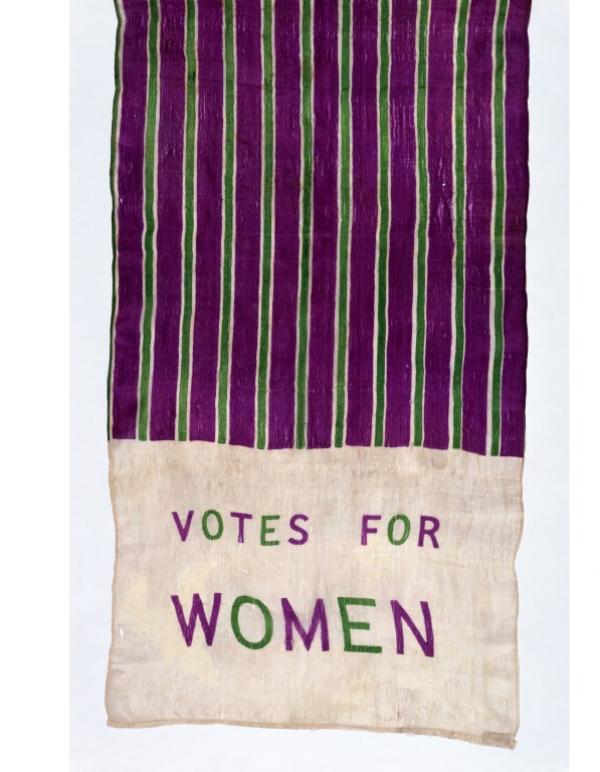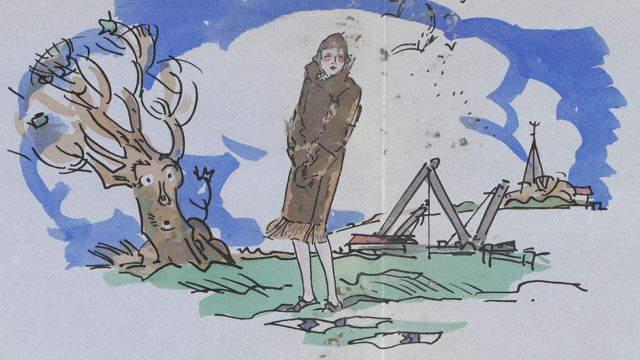Commemorative Suffragette silk scarf with purple, green and white vertical stripes, Museum no. T.20-1946. © Victoria and Albert Museum
On 10 February 1913, the V&A’s Director, Cecil Harcourt-Smith, received disturbing intelligence of an audacious plot by members of the Women’s Social and Political Union (WSPU) to vandalise the Museum’s priceless treasures.
The suffragette movement had a profound effect on London’s museums and galleries. Mary ‘Slasher’ Richardson’s mutilation of Velazquez’s The Toilet of Venus (‘The Rokeby Venus’) at the National Gallery on 10 March 1914 was a dramatic signal that the WSPU intended to target cultural institutions in their bid to secure women the vote, and according to one informant, it was decided at a meeting of militants ‘to continue outrages on galleries and museums until not a picture remained undamaged in London’.
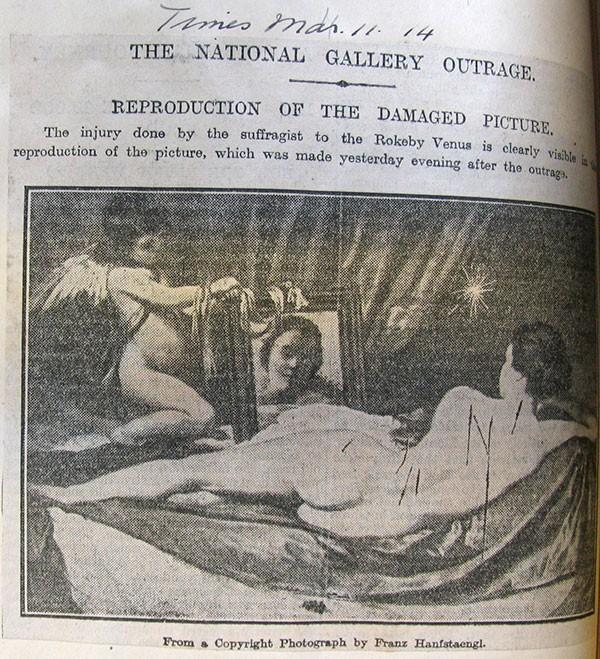
Photograph of damage to ‘The Rokeby Venus’ reproduced in The Times (11 March 1914). V&A Archive, MA/49/2/92. © Victoria and Albert Museum
While attacks also took place outside London – 13 pictures were damaged in the Manchester Art Gallery in 1913 – the concentration of art treasures in the capital and their susceptibility to attack by fire, acid or other destructive means spread alarm among the directors of London’s national museums and galleries.
The intelligence that Cecil Harcourt-Smith obtained during two interviews with an informant called Miss Wilson, who used the nom de plume ‘B. Collins’ and described herself as ‘a personal friend of a great many suffragettes’, revealed possible plots to deface valuable books and manuscripts in the V&A’s National Art Library, attack the Raphael cartoons, and smash china in the Ceramics department. Ultimately these threats proved to be unfounded and the V&A escaped largely unscathed: Miss Wilson’s information was dismissed as ‘so much in the nature of current gossip that it hardly seems necessary to take any action upon it’, although someone did use a hat-pin to scratch the phrase ‘Votes for Women’ on the handrail in Room 100.
The rules of engagement for tackling militant suffragettes were set out in an internal memorandum which advised that when detaining a woman, she should be seized by the wrists, and that precautions should be taken against pepper being thrown into the warder’s eyes, allowing the suffragette to make good her escape.
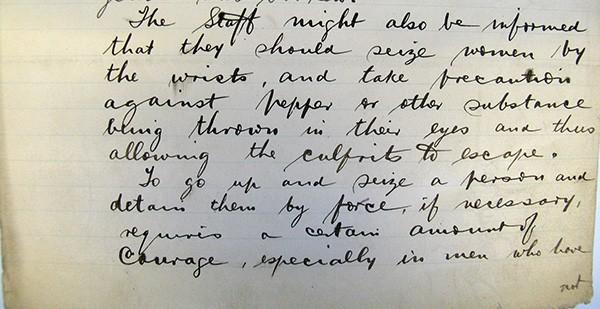
Internal memorandum setting out measures against suffragist action. V&A Archive, ED 84/202. © Victoria and Albert Museum
Suffragette militancy, however, forced the V&A to make radical (if in some cases temporary) changes to its admission procedures: sticks, umbrellas, bags and parcels were left at the entrance (ladies’ muffs were subject to ‘discreet’ examination by doorkeepers); several galleries, including the Jones galleries, the Salting collection of Oriental porcelain, the Raphael Cartoon gallery, and the Loan Court were closed to the public; the number of warders was increased, bolstered further by cleaners and attendants; and plain clothes detectives mingled with visitors. Proposals to admit women by ticket or ban them from entry altogether were rejected.
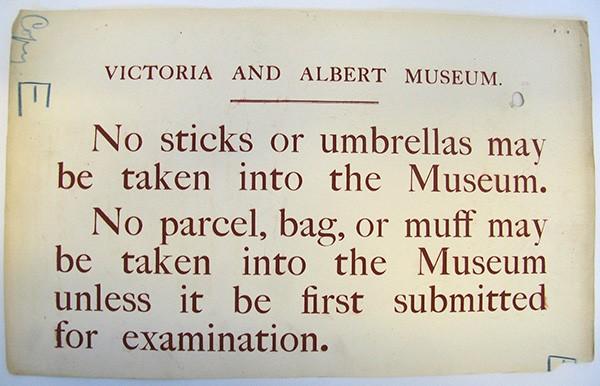
Notice to the public. V&A Archive, ED 84/202. © Victoria and Albert Museum
Significantly, the suffragettes’ actions contributed to the Museum’s decision to abolish admission charges in 1914. This was made in part because it was felt that the charges were deterring visitors from taking guided tours, but also because the Board of Education considered that ‘the increase in the number of visitors which is likely to result from the abolition of the fees may be expected to provide some additional security for the Collections’ against possible suffragette ‘outrages’.
The intervention of World War 1, however, put end to the suffragettes’ attacks on museums and galleries.
The V&A Archive holds official papers and press cuttings relating to measures taken against the threat of suffragette action in the Museum and are available for study in the Blythe House Reading Room.
